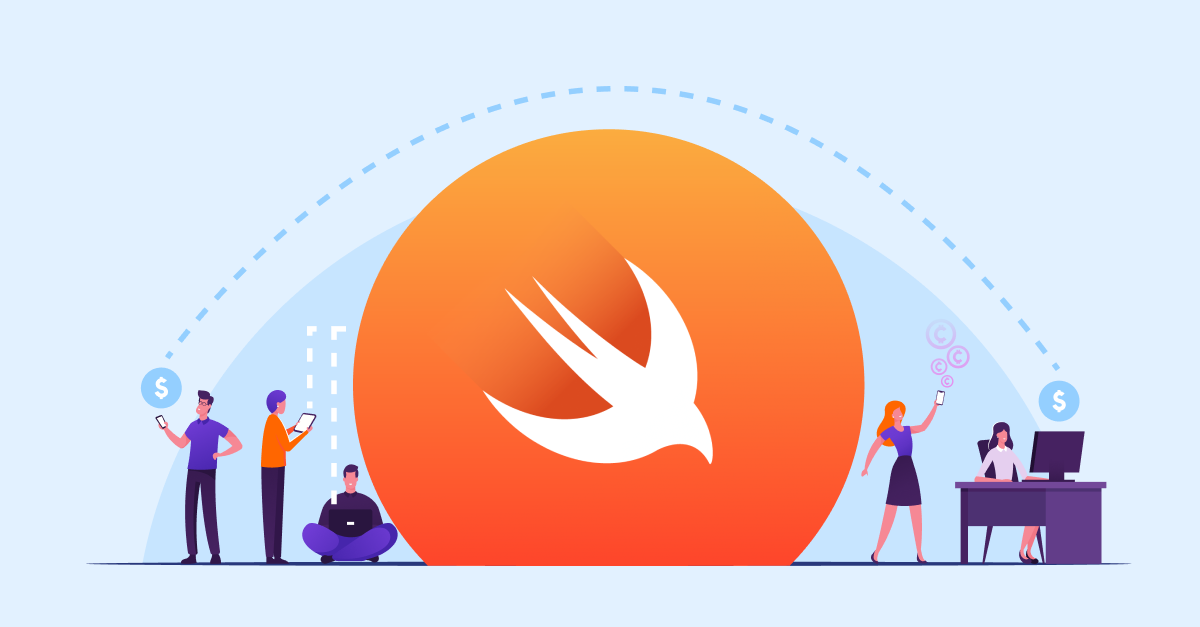In the summer of 2021, Apple released Swift 5.5, which was the latest version of its open-source programming language for building apps on iOS Mac OS and other platforms. It was announced in June at their annual developer conference, with headline features including but not limited to, Swift concurrency for asynchronous and concurrent programming, improved package management, and standard library packages.
The SwiftUI update brings new features such as improved list views, better search experiences and support for control focus areas. This blog post is going to look at everything Apple announced in their 5.5 update and how this can help developers in 2022 and beyond.
What is SwiftUI?
Before we get to the good stuff let’s have a look at what Swift UI actually is. SwiftUI is a platform that helps developers build highly effective and performing apps across all Apple platforms with the power of Swift (Apple’s powerful and intuitive programming language) and most importantly, using as little code as possible. With SwiftUI you can bring even better experiences to all your users using just one set of tools and API and Apple’s latest update has just made this experience even better.
Improvements to SwiftUI
So first of all, let’s talk about the improvements to SwiftUI. The changes that most users were looking forward to the most and also expected were within Apple’s 2-year-old declarative framework. Two years prior to this, Apple focused on moving to the new paradigm which in turn, has allowed this year’s release to be even more powerful.
When it comes to adding critical APIs that are crucial to their apps, Apple has been dogfooding this. They currently use it in apps like Maps, Photos, and Shortcuts and also rebuilt apps with SwiftUI such as Weather and Apple Pay. The new WatchOS app called Find My was also created using SwiftUI. With these new releases, there is a lot to work with for new developers in 2022. For example, you can now easily add custom swipeable actions on rows. You’ll have a lot to play with when it comes to creating and unloading remote images asynchronously to different types of button customizations.
SwiftUI now provides a selection of new built-in views, which improve a progress indicator under text editor, also supporting new view layouts like grids and outlines. You can now use Swift if you want to define the structure and behavior of an entire app.
There’s also been a focus on vital accessibility modifiers in this update. Now, if you’re creating custom components, you can inherit the accessibility implementation from the standard Stepper. According to Apple, “you can now speed up interactions by exposing the most relevant items on a screen and a simple list using a new rotor API. The current accessibility focus state can re-read and even change programmatically with the new accessibility representation API. Users can now be sure that their custom controls can benefit from full accessibility support from existing standard SwiftUI controls”.
Swift 5.5 and Concurrency
Concurrency was the most sought after feature in recent years for this open-source language. In this update, Apple finally decided to add first-class concurrency support which helps write code that takes advantage of the multi-core process on your devices by working in parallel with each other.
Prior to this, you had to use completion handlers for the same motive which was very time-consuming and complex for developers working with Swift. With the new update, rising asynchronous code is simpler, less time-consuming, and neater. Doing asynchronous work in the background is key to building responsive apps and with this update, users are glad to know that this has now become much easier.
Swift Playgrounds
Previously, developers have been using Swift Playgrounds to prototype views in previous versions. The problem with this was that you couldn’t build a fully-featured app. You’ll be glad to know that with this latest release you can now make them on an iPad and submit them to the App Store directly from the Playgrounds app. This goes without saying but it is now much more convenient for developers all over the world who use Swift because it means they can create and build an app on their iPad at the same time. It now features the same interactive preview available on Xcode and provides more support for SwiftUI.
Machine Learning
For iOS and iPadOS and macOS devices, Create ML is now available. Users can programmatically experiment and automate model creation and Swift scripts in Playgrounds, whilst also building dynamic features that allow ML APIs to train models directly from user input or behavior on the device. This will subsequently allow you to provide personalized and adaptive experiences for your customers in 2022 and beyond.
MusicKit
Furthermore, with this update, you can now easily integrate Apple music into iOS and iPodOS apps using Swift. The music kit framework provides a new model layer accessing music items in Swift, whilst also providing playback support allowing you to add music to your app where necessary. This in turn will give developers much more freedom and flexibility when it comes to designing key features of their app in 2022.
Declarative Syntax
Swift UI uses declarative syntax, meaning that you can simply state what your user’s space should do. This declarative state even applies to complex concepts like animation. The system will now handle any and all of the steps that are required to create smooth movement. With technology on the rise after the pandemic in 2022, you will now be able to explore new ways to make your app come alive using SwiftUI!
Design Tools
With dynamic replacement, the Swift compiler and runtime are fully embedded through your Xcode. In this new update, Xcode can swap edited code directly in your live app with dynamic replacement being a new feature in Swift.
Conclusion
So, there you have it. Everything you need to know about Apple’s latest release and update when it comes to SwiftUI. This was a really exciting update for developers all over the world and we’re already seeing their benefits being reaped in full force. It has given us a fantastic year to experiment with new tools, especially alongside substantial changes in the Swift programming language and numerous improvements in Xcode.
In 2022 and beyond, it’s really important that developers get the most out of their programming language and updates to Swift 5.5 have allowed developers to take a modular approach to software projects by reducing performance obstacles significantly. Have you seen improved performance and development after the Swift 5.5 updates?
Need some help with Apple’s SwiftUI? Our skilled mobile app developers using Apple SwiftUI can provide support at all stages of your app development process. Reach out to us today.




